Camping in Hong Kong: the most scenic spots to pitch your tent
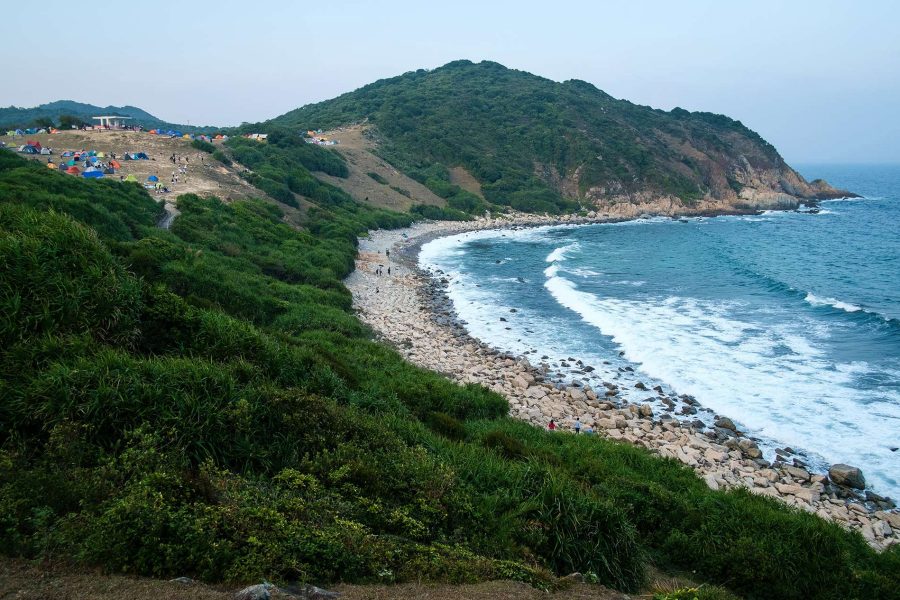
Camping in Hong Kong is easier than you might think. There’s no denying Hong Kong is crowded, with most of its 7.44 million residents squeezed into forests of high-rises in low-lying areas between the numerous hills. Fortunately, those hills are also equipped with scenic spots where the great outdoors can become your home for a night or two.
There are more than 40 campsites around the city operated by the government and others run by NGOs and private companies. Many are free and most are easily reached by public transport, although a few will require a bit of a hike to get there, and you may have to hop on a ferry before putting in the hard yards to the mountaintops and beaches they’ve staked claim to. Companies like Urban Camper sell and rent a wide range of camping equipment.
Read on for the best spots to go camping in Hong Kong.
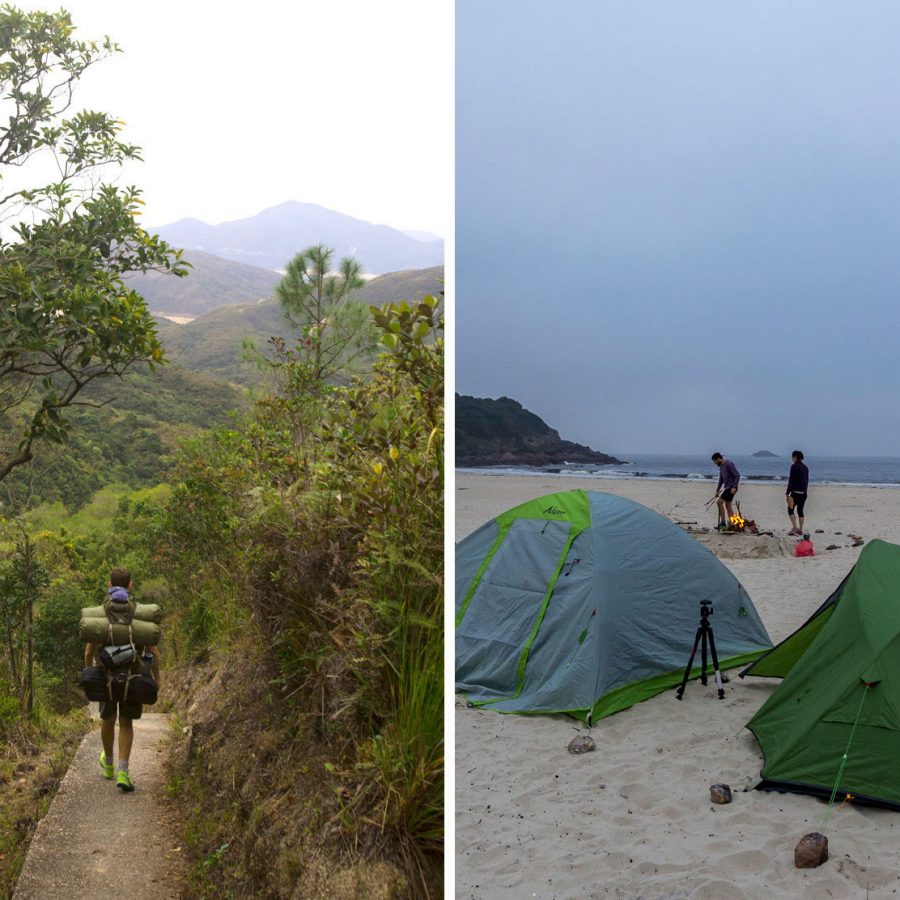
Credit: Mike Pickles
Tai Long Wan, Sai Kung
Big, famous and far away
Probably the most well-known spot to go camping in Hong Kong, this collection of four beautiful beaches – Sai Wan, Ham Tim, Tai Wan and Tung Wan – offers white sand, clear water and dreamy views of a bay dotted with tiny islands, making them feel more like a South East Asian island paradise than part of one of the world’s busiest cities.
The sea can be fierce at times – hence its name, which means ‘Big Wave Bay,’ and its popularity with surfers. There are basic facilities and a few restaurants and shops, which offer the option to rent a tent and other camping equipment when you arrive.
How to get there: bus to Sai Kung town from Hang Hau, Choi Hung, Diamond Hill or Mong Kok MTR stations. From there, options include take a speedboat the whole way; take bus 29R or a taxi to Sai Wan Pavilion and hike for 90 minutes to Ham Tin or Tai Wan; or take bus 94 and either hike for 90 minutes on the MacLehose Trail eastwards from Pak Tam Au or take a ferry from Wong Shek Pier to Chek Kang and hike for an hour.
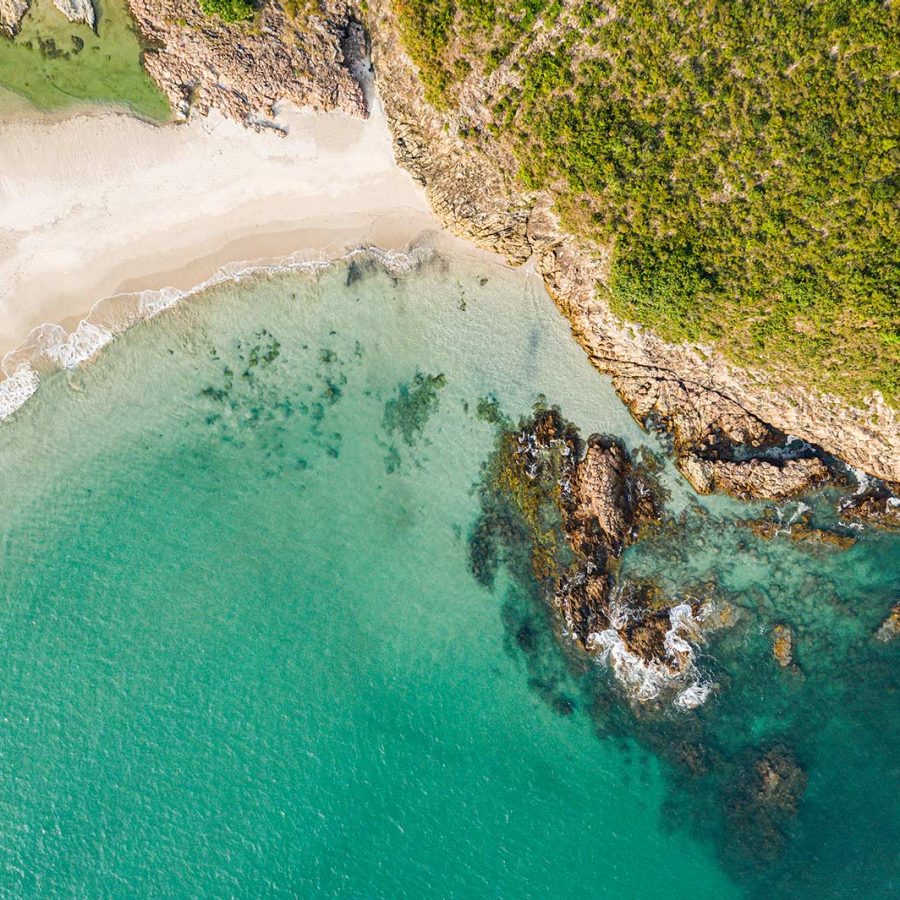
Credit: Mike Pickles
Long Ke Wan, Sai Kung
Blissful beach vibes
An official government campsite that feels very far away but is surprisingly easy to get to. You’ll need to bring everything (tent, sleeping bags, cooking equipment – and water) but it’s worth it for the spectacular setting: a wide, flat, extremely pretty beach in a tight bay shrouded by hills, with uninterrupted sea views. Nearby High Island Reservoir, the access point to the beach, features ancient rock formations.
How to get there: from Sai Kung Town, take a taxi to the very end of Sai Kung Man Yee Road, on a dam over High Island Reservoir, then hike north for 20 minutes along Section 1 of the MacLehose Trail.
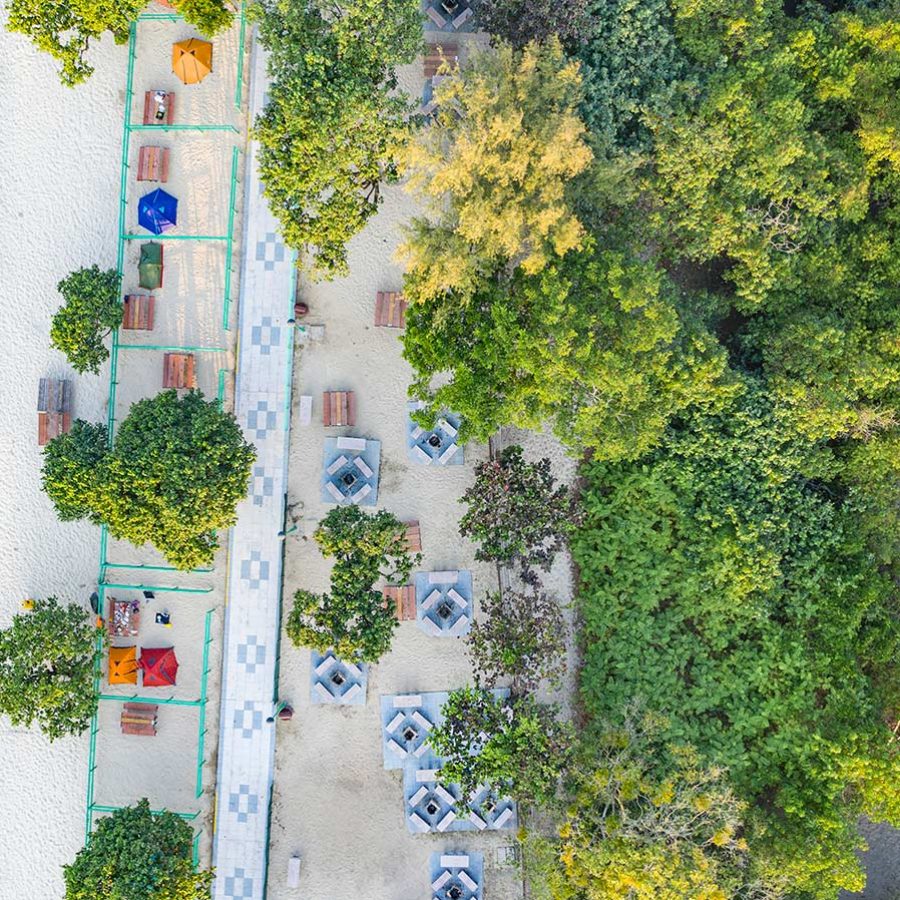
Credit: Mike Pickles
Pui O, Lantau Island
Chilling by the bay
Lantau Island’s Pui O provides plenty of reward for little effort. Easy to reach, it’s a long, tranquil beach with fine sand, trees and sensational sunset views. It’s located in a bay, albeit one with sometimes incongruous line of sight to a major shipping lane and Macao ferries zipping past. The government-run campsite gives you a little fenced-off area for your tent and access to barbecue pits; there are also public toilets and changing rooms. A small shop and a few restaurants are on the beach, and several more of both a few minutes’ walk away on the main road.
How to get there: take the ferry from Central to Mui Wo, where all buses go through Pui O; or take the MTR to Tung Chung and bus 3M to Pui O.
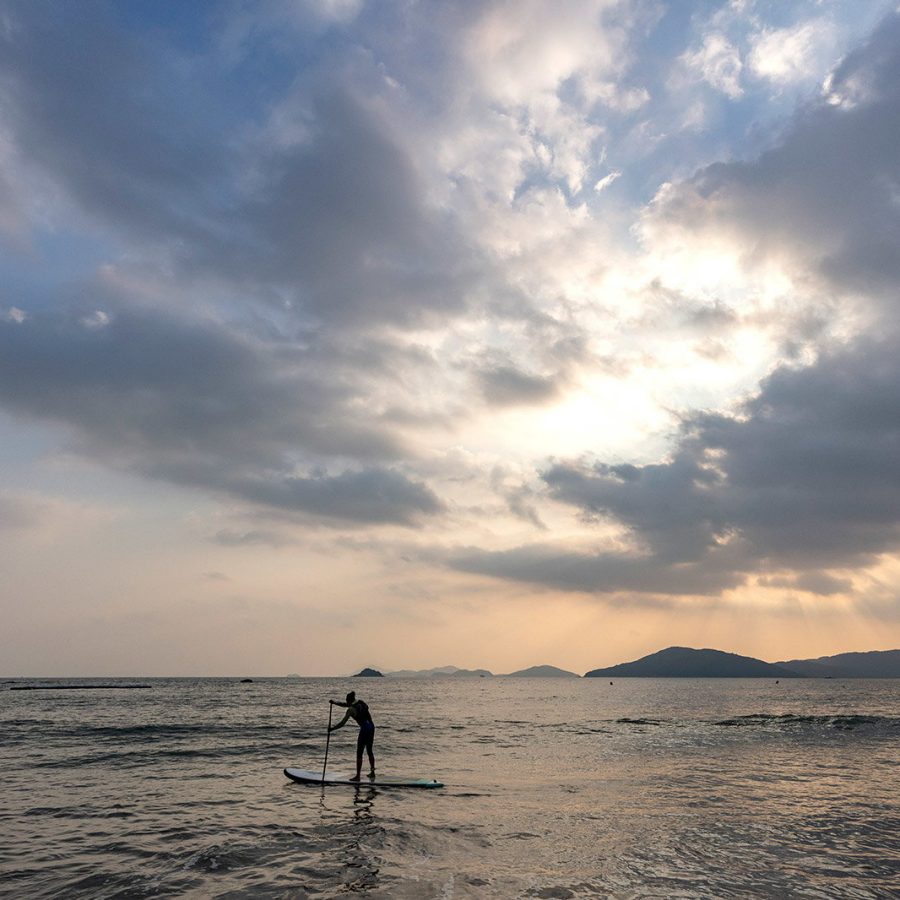
Credit: Mike Pickles
Long Coast Seasport, Lantau Island
The one for watersports
Located by the long, beautiful, often underpopulated Cheung Sha beach, on the south coast of Lantau, Long Coast Seasport is a top choice for water babies looking to go camping in Hong Kong; it’s a watersports centre offering sailing, surfing, windsurfing, kiteboarding, kayaking, wakeboarding and more, with lessons and combined activity and accommodation packages available. It’s very much at the glamping end of the spectrum, with fully equipped safari tents and static caravans featuring aircon, comfortable beds and private bathrooms. Breakfast is included, and there are shops and popular restaurants such as Bathers on the beach.
How to get there: take the ferry from Central to Mui Wo, then any of a range of buses to Cheung Sha beach.
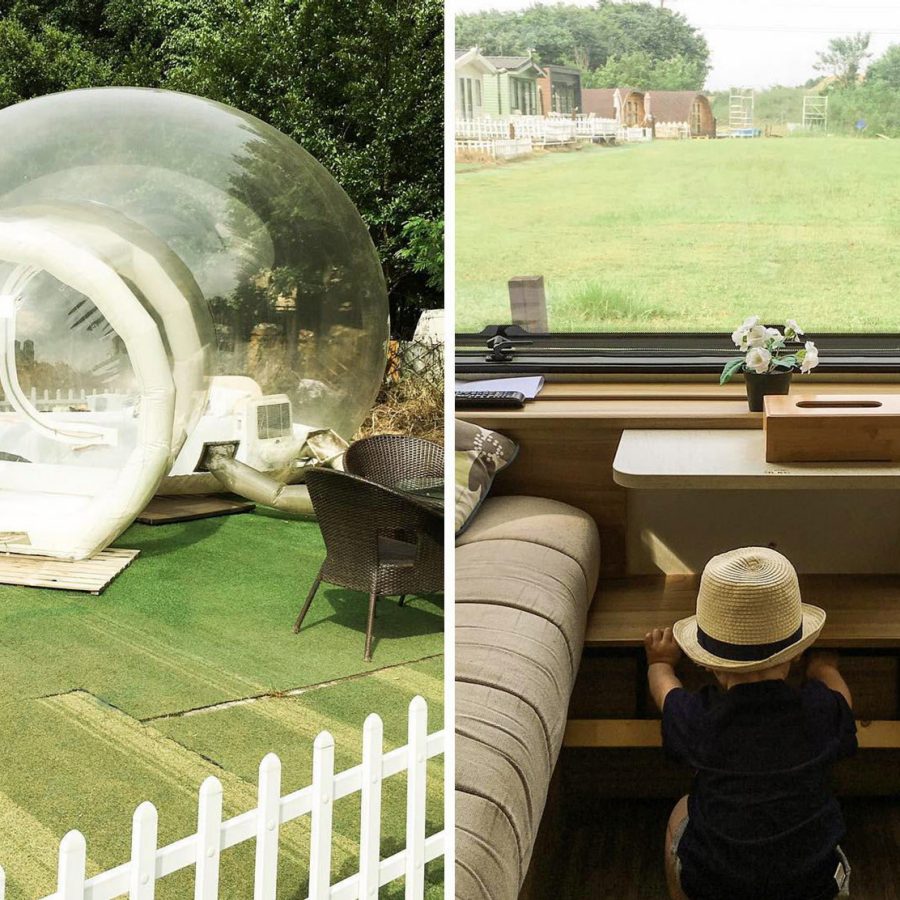
Credit: kaman.carmenlai / Instagram
Mingle Farm, Yuen Long
Asia's quirkiest farmstay
Mingle Farm , by the coast near the New Territories town of Yuen Long, probably qualifies as a ‘glamping’ experience. It’s probably also the most unusual camping in Hong Kong experience on this list: accommodations include a futuristic bubble, either transparent or opaque, complete with beds and aircon; bouncy castles; inflatable rockets or giant toadstools. There are also caravans and houses with private bathrooms, or simply turn up and pitch your tent on the grass. As the name implies, there’s an onsite organic farm that hosts talks on eco-related themes and offers activities including archery, trampolining, zorbing and tree climbing.
How to get there: take the MTR to Yuen Long, then bus 33, 34 or K65 to Lau Fau Shan.
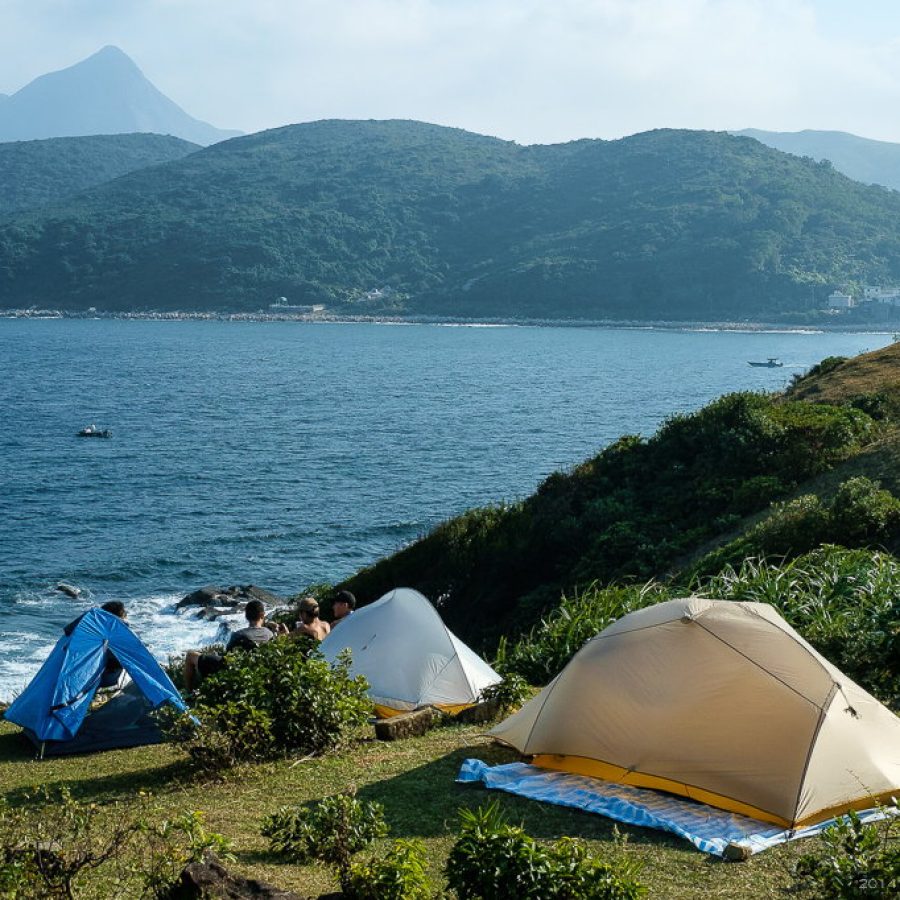
Credit: peterlamphotography.com
Grass Island, Sai Kung
Turf's up
This tiny dot off the coast of Sai Kung, known as Tap Mun in Cantonese, lives up to its name; the extensive patches of lush grass are perfect for pitching up a tent. Like most of Hong Kong’s islands, it’s hilly, providing stunning views, particularly stunning at sunrise and sunset. There’s a resident population of about 100 in a small fishing village in the southwest of the island, where there are also interesting temples and small eateries and shops. Bring most of your own food, but don’t leave it unattended; the island is also home to numerous wild cows who will happily help themselves to your stash.
How to get there: there are two ferry routes: either take bus 96R from Diamond Hill MTR station or bus 94 from Sai Kung Town to Wong Shek Pier; or take a short taxi ride from University MTR station to Ma Liu Shui Pier.
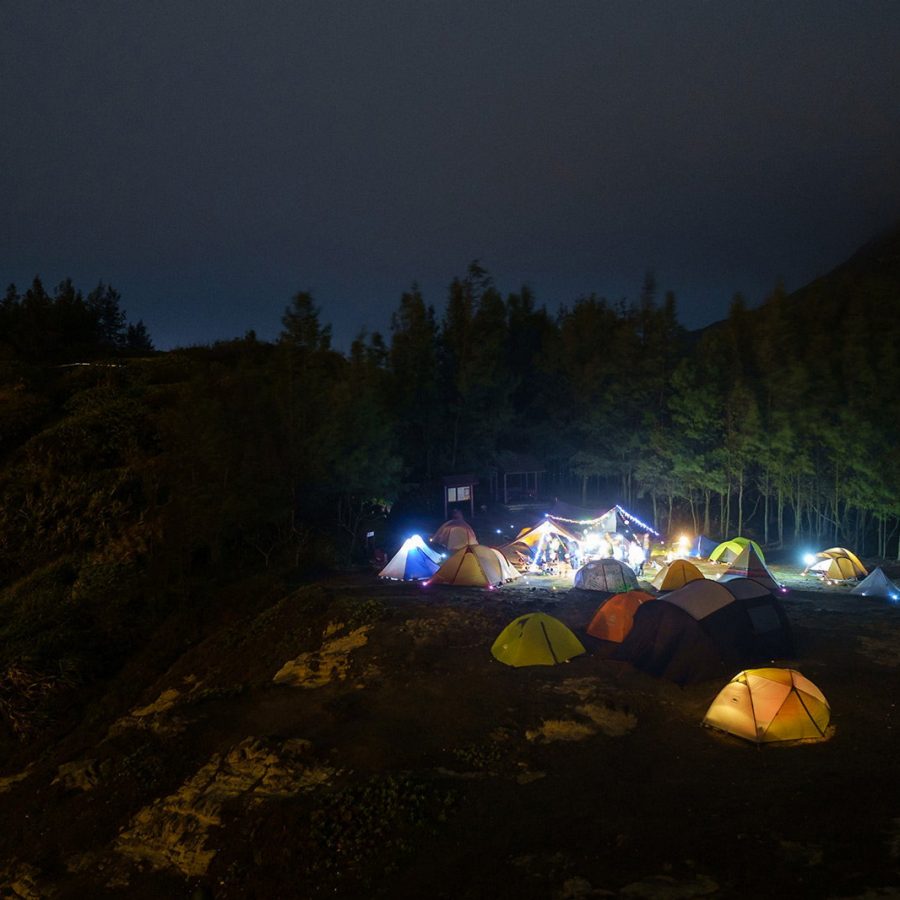
Credit: peterlamphotography.com
Tung Lung Chau
Walk on the wild side
A wild, rugged island in the southeastern New Territories, Tung Lung Chau packs plenty into its 2.42 square kilometres and makes for a great spot to go camping in Hong Kong. It features prehistoric stone carvings; a ruined 16th century fort; pleasant walking paths to the scenic southern tip and over the 230-metre-high Nam Tong Shan; and some of Hong Kong’s best outdoor rock climbing. And it tends to be pretty empty, perhaps because there are only a few boats there a day and very basic services. The government campsite is in a picturesque location next to the fort.
How to get there: there are five ferries a day on weekends and public holidays to and from Sai Wan Ho Pier, close to Sai Wan Ho MTR station; and six to and from Sam Ka Tsuen, close to Yau Tong MTR.
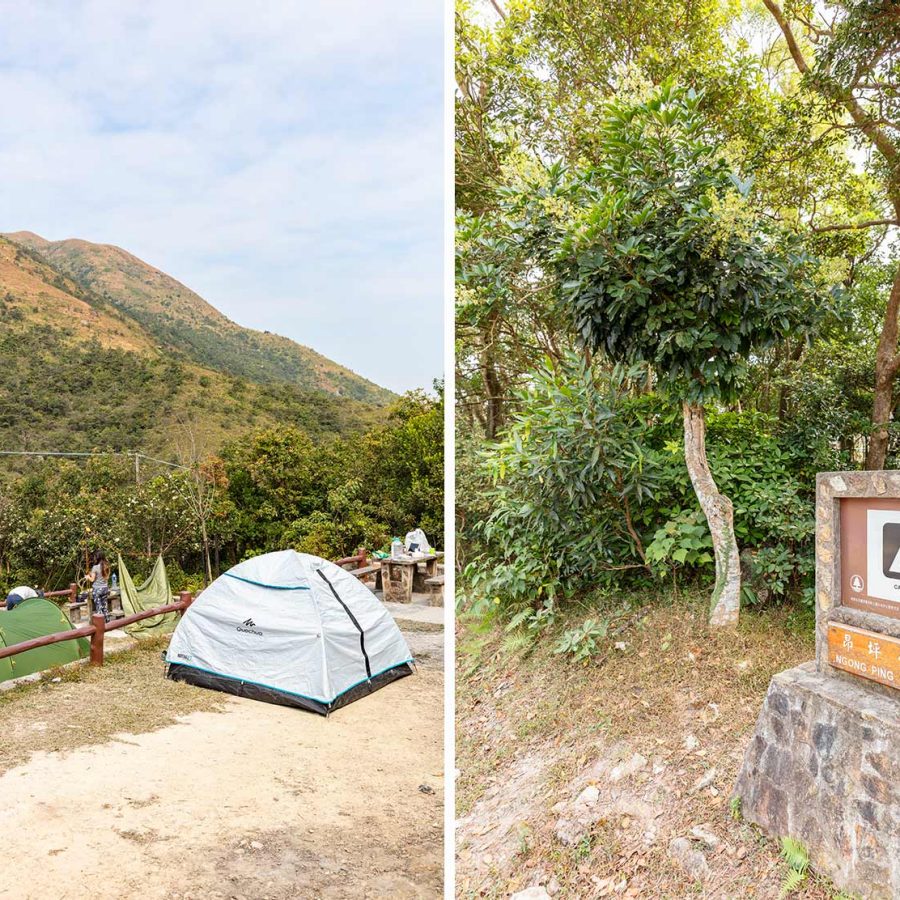
Credit: Mike Pickles
Ngong Ping, Lantau Island
Sleeping in the shadow of the Buddha
Here’s your chance to go camping in Hong Kong and hang out by one of its top attractions at the same time – Lantau Island’s 34-metre-tall seated bronze Tian Tan Buddha – after the daytime tourist hordes have cleared out. The well-equipped campsite is in a wooded valley a short walk from the so-called Big Buddha and adjoining monastery, part of a highland area about 400 metres above sea level, next to the majestic Lantau Peak. It’s reachable by public transport and you get views of the sea, mountains and equally impressive Hong Kong-Zhuhai-Macao Bridge. The adjoining tourist village of Ngong Ping has ample shops and eateries.
How to get there: take the MTR to Tung Chung, then either bus 23 to Ngong Ping or the Ngong Ping 360 cable car – the glass-bottomed cabins afford particularly lovely views of steep forested hillsides, sea and airport; or take the ferry from Central to Mui Wo and bus 2 to Ngong Ping.
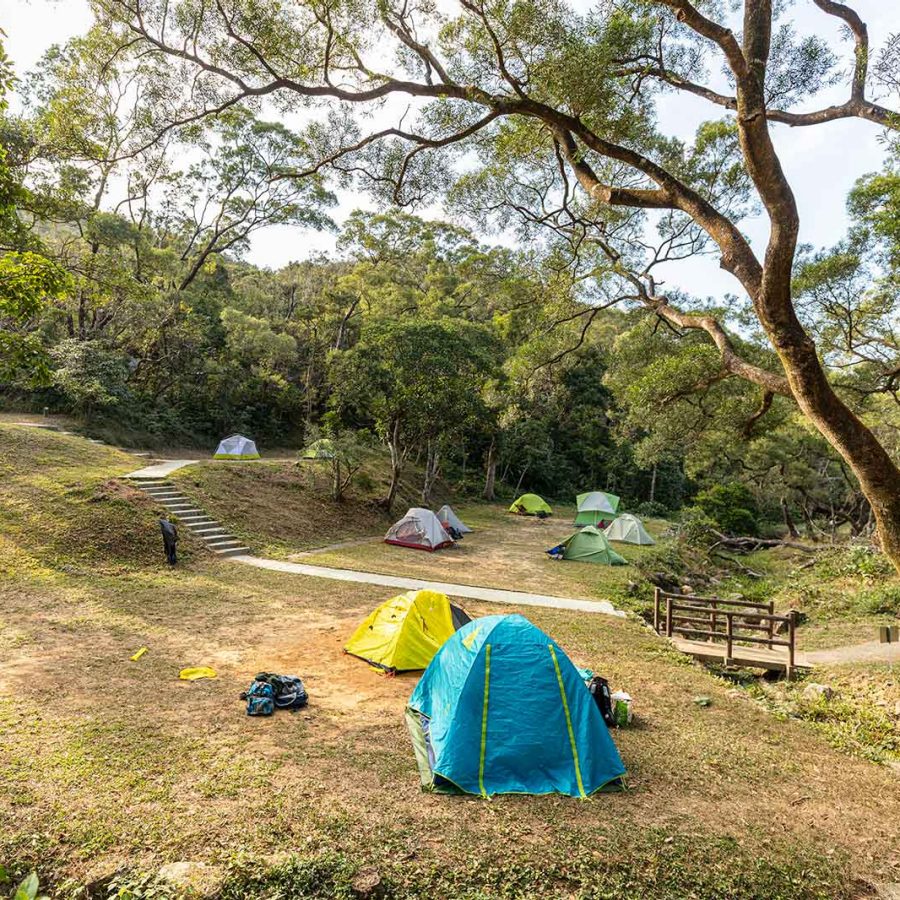
Credit: Mike Pickles
Gilwell, Kowloon
Scout out the local sights
Handily located but with an impressively back-to-nature feel about it, Gilwell Campsite is owned by the Scout Association of Hong Kong. It’s huge, well designed, surrounded by greenery and well positioned – close to the intersection of Hong Kong’s two longest hiking routes – MacLehose and Wilson – and a short walk from panoramic views of Kowloon, the harbour and beyond. It’s accessible by road, which is handy given that there are no shops or services nearby, although there’s a massive barbecue pit and some rather nice wooden showers and toilets.
How to get there: take the MTR to Choi Hung, then walk along Clear Water Bay Road, turn left at Fei Ngo Shan Road and hike for about 45 minutes – or you can take a taxi all the way there.
More inspiration
Hong Kong travel information
- China – the Chinese Mainland, Hong Kong SAR, Macao SAR and Taiwan Region
- Hong Kong SAR - English
- Chinese Mainland (China) - English
- Taiwan, China - English
- 香港特別行政區 - 繁體中文
- 中国內地 - 简体中文
- 中國台灣 - 繁體中文
- Africa
- South Africa - English
- Asia
- Bangladesh - English
- Korea - English
- Singapore - English
- Cambodia - English
- 한국 - 한국어
- Sri Lanka - English
- India - English
- Malaysia - English
- Thailand - English
- Indonesia - English
- Maldives - English
- ประเทศไทย - ภาษาไทย
- Indonesia - Bahasa Indonesia
- Myanmar - English
- Vietnam - English
- Japan - English
- Nepal - English
- Việt Nam - tiếng Việt
- 日本 - 日本語
- Philippines - English
- Australasia
- Australia - English
- New Zealand - English